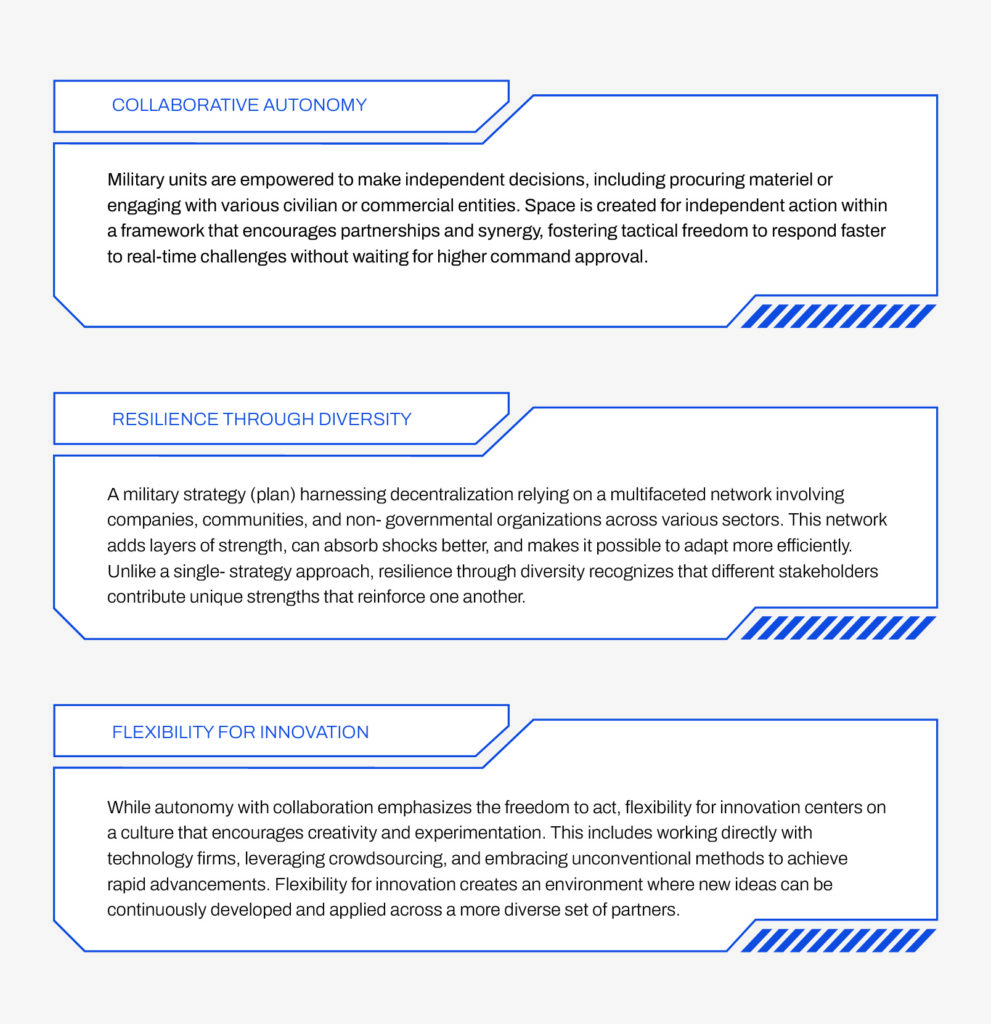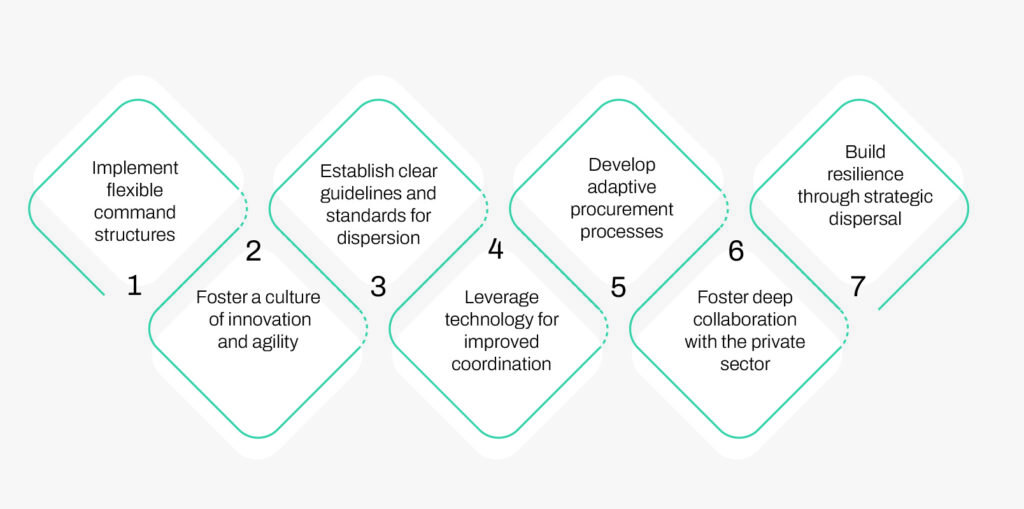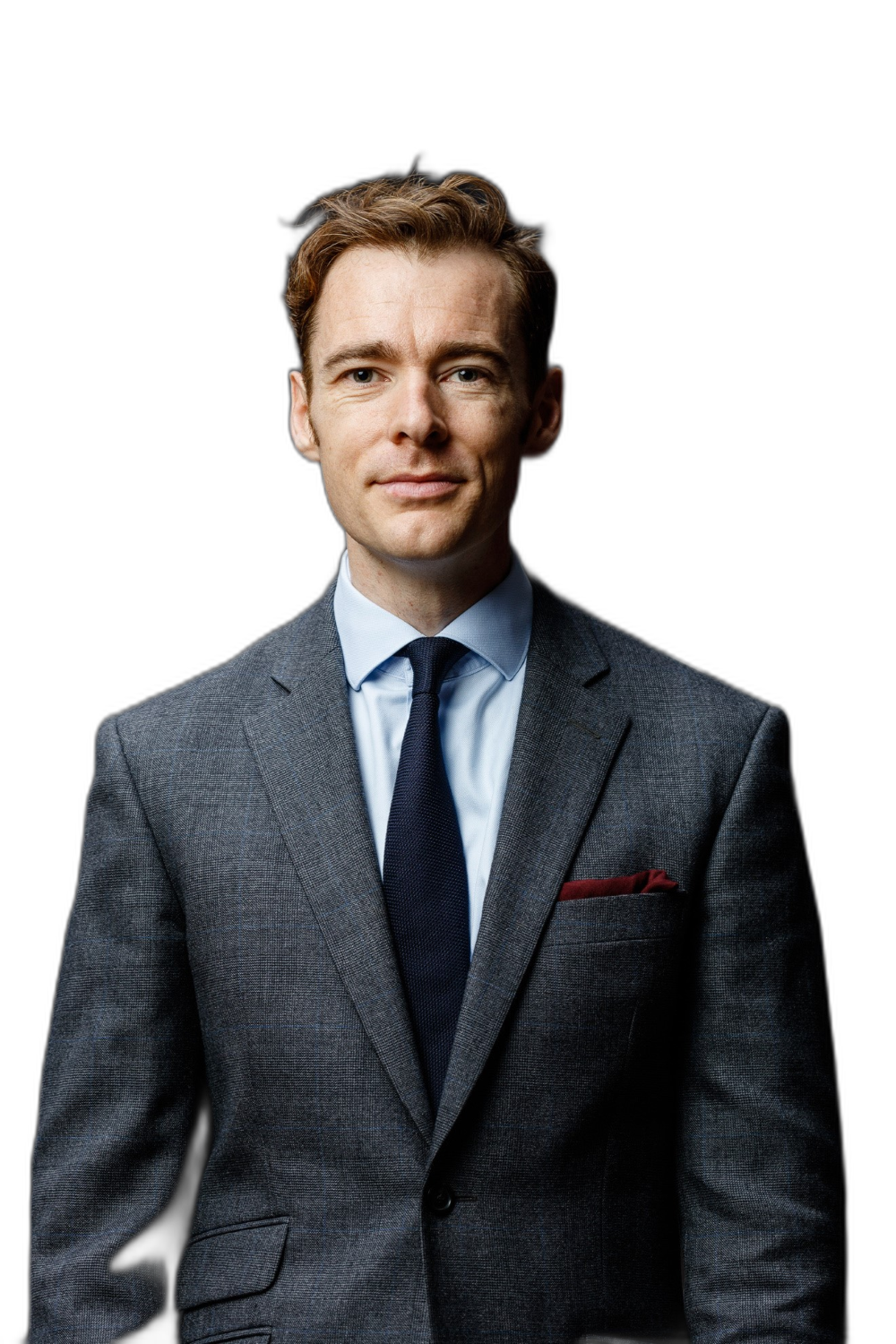Introduction
Conventional wisdom in developing and deploying military capability tends to focus on cutting-edge sensors, shooters, and communications systems to meet the perceived needs of frontline operators. Such capabilities are generally acquired through large, deliberate, and bespoke acquisition programs by nation states and all too often the result is yesterday’s technology delivered tomorrow at next week’s prices.
Today, with the rise of new disruptive technologies, military capability programs must be increasingly intertwined with non-traditional defense companies, such as those specializing in artificial intelligence, autonomy, and robotics. Given the sheer scale of commercial capital being invested in these areas dual-use innovations are likely to originate from the private sector. Indeed, integrating private sector innovation within the defense framework, combining both public and private investment, has become a well-trodden argument informed by the realities of warfighting. These insights are not new, and this author has written about them at length (Murray, 2020).
However, in an era marked by accelerating (exponential) technological advancements and geopolitical flux, traditional models of military capability development—predicated on large, centralized acquisition programs—increasingly seem misaligned with the exigencies of modern warfare. The operational dynamics witnessed in both Afghanistan and Ukraine serve as compelling signposts, pointing toward a future defense landscape that may render our existing military paradigms obsolete. As conventional wisdom faces disruption, are we on the cusp of a wholesale reimagination of how military forces are developed, deployed, and utilized?
As conventional wisdom faces disruption, are we on the cusp of a wholesale reimagination of how military forces are developed, deployed, and utilized?
– Robert Murray
This paper aims to scrutinize this pressing question through a lens that is both historical and forward-looking. Beginning with an analysis of the withdrawal from Afghanistan in 2021 and those evolving strategies in Ukraine, it examines the implications of those operational shifts for future military planning. While acknowledging the merits and limitations of established practices, this analysis primarily focuses on emergent trends—namely decentralization, dispersal, and privatization—that stand to reshape the defense sector fundamentally. The objective is to delineate alternative pathways for both policy makers and military leaders as they navigate an increasingly complex and innovative environment to develop and deploy future military capabilities.
The Shifting Landscape for Military Operations
Operational command and control have long operated on a model that centralizes decision-making while allowing for decentralized execution. More recently, this has evolved into a nuanced structure that combines centralized command, distributed control, and decentralized execution (Mulgund, 2021). However, as we stand on the cusp of a new era marked by disruptive technologies and diversified actors, the adequacy of these traditional models comes into question.
Recent conflict theaters offer telling insights, suggesting that we are in the midst of a profound reconfiguration in the utilization of military force. While still in their infancy, emerging trends point toward a seismic shift—from a state-dominated paradigm of centralized control to one characterized by decentralization and a multiplicity of involved actors. This dispersion takes place across a significantly more heterogeneous ecosystem and heralds changes in three crucial dimensions: front-line decision-making, the role of private corporations in defense, and novel financing models that redefine how military capabilities are acquired and sustained.
Observations from Afghanistan, 2021
During the -Allied withdrawal from Afghanistan in 2021, a seminal shift in military operations became palpably evident. Ad-hoc alliances sprang into existence, comprising an unlikely mix of politicians, philanthropists, private military companies, and state officials, among others. Remarkably, this eclectic cohort interfaced directly with military decision-makers, thanks in part to open-access digital platforms commonly used by civilians (Phillips, 2023; McLeary, 2022). Enabled by commercially sourced space imagery and instant messaging applications, these civilian consortia effectively co-orchestrated air operations alongside military units.
This collaborative model, which the author was a part of, transcends the traditional understanding of military-led activities as a monolithic, hierarchical enterprise. Instead, it suggests the emergence of a more diffuse and resilient operational ecosystem. Here, the monolithic ‘military evacuation operation’ gives way to a diversified network of stakeholders who collectively share the operational burden. This networked approach is more than a mere tactical expedient; it portends a strategic realignment. As hierarchical command structures yield to these more flexible and adaptive networks, a newfound agility can be harnessed—permitting quicker adaptations to rapidly changing operational realities.
Observations from the Conflict in Ukraine, 2022
Amid the grim backdrop of the conflict in Ukraine, a remarkable canvas of innovation and adaptability has also come to the fore. At the crux are a series of unique partnerships that have emerged, uniting individuals like Elon Musk, tech behemoths such as Amazon Web Services and Microsoft, and pioneering firms like SpaceX and Starlink who between them are providing ‘white hat’ cyber and infrastructure support (Gralla, 2023; Moore, 2022). Like Afghanistan in 2021, Ukraine is demonstrating that no longer is defense a theater commanded solely by centralized government agencies; it is becoming a polycentric sphere where ad-hoc, purpose-driven collaborations lead the way.
One standout example lies in Ukraine’s nimble deployment of commercial drones, which frontline troops procure and adapt through additive manufacturing techniques (Times, 2023; Ross, 2023). The financial implications are stark. Commercial drones, such as the DJI Mavic 3 available at around $2,000 per unit, offer a sharp contrast to their military-grade counterparts, like the $5 million Bayraktar TB2 or the $30 million MQ9 Reaper (MIT Technology Review, 2023). While one can’t simply equate these drones on cost alone—each has distinct operational attributes—the ability to rapidly deploy cost-efficient capabilities speaks volumes about the new defense landscape.
This shift extends to the financial realm, where Ukraine exemplifies emerging trends that challenge traditional defense financing models. Crowdfunding is no longer the preserve of startups and social causes; it is infiltrating the military arena. Citizens are contributing to the acquisition of armaments,[1] effectively decentralizing financial control traditionally held by national governments. This transformation, while still embryonic, holds implications far beyond Ukrainian borders, with the potential to alter the arms trade through the creation of secondary markets, arms control norms, and even the citizen-state relationship. In a digital age infused with cryptocurrencies, the adaptability and reach of such financing models are likely to proliferate, particularly given the often inherent dual-use nature of new technologies making them easier to invest in.
Decentralization, Dispersal and Privatization
At the heart of what was seen in Afghanistan in 2021 and what is being seen in Ukraine is a paradigmatic shift characterized by decentralization, dispersal, and an unprecedented privatization of capability. This evolution is evidenced in areas ranging from national infrastructure management by private corporations to the intermingling of state and non-state actors in conflict zones (Capoot, 2022; Lough, 2023). Importantly, these developments are not just tactical diversions; they mark a profound transformation of state-centric warfare, weaving it tightly with dual-use technologies and global capital flows (Sabbagh, 2023).
Contrary to this ongoing transformation, many in the corridors of power view such developments as mere anomalies. For instance, the prevalent official narrative sees the conflict in Ukraine as an exception, not a signpost for future warfare (CIA, 2022). This thinking, while comforting, risks strategic myopia. Afghanistan and Ukraine serve as harbingers, highlighting that future warfare will transcend tactical adjustments to demand a recalibration of strategy. A confluence of factors—technological decentralization, the democratization of military capability, and changing capital flows—is contributing to this complex tapestry (Bowden, 2021) resulting in a kaleidoscope of conflict.
In this context, what we are seeing is not just a transformation but the start of a revolution. Decision-making is becoming more localized; the industrial base is dispersing. [2] Traditional demarcations separating the state, commercial sectors, and civil society are blurring. In this brave new world, the velocity of innovation and the accessibility of cost-effective armaments will be defining parameters. If we misconstrue these shifts as merely episodic, we risk not just tactical failures but strategic obsolescence.
In today’s rapidly evolving geopolitical landscape, an in-depth comprehension of decentralization and dispersal is not merely academic—it’s a strategic imperative. These twin concepts are in a reciprocal relationship with the contemporary theater of military operations; they both influence and are influenced by the strategic realities on the ground.
Decision-making is becoming more localized; the industrial base is dispersing.
– Robert Murray
At its core, decentralization pertains to the devolution of decision-making authority. By distributing control across various nodes, military organizations stand to gain from enhanced adaptive capacities, more robust collaboration, and accelerated rates of innovation. Dispersal, meanwhile, deals with the physical and functional allocation of assets and responsibilities, effectively serving as the spatial counterpart to decentralization. It emphasizes how the placement of assets—be it personnel, technology, or capital—can complement decentralized decision-making.
When combined, decentralization and dispersal forge a robust, intricate operating environment. Such a framework enables militaries to harness a more eclectic array of actors, technologies, and strategic doctrines. Importantly, this is not merely a theoretical construct but a practical one, marked by the presence of diverse stakeholders—ranging from state entities and the private sector to individual contributors.
In such a landscape, militaries can pivot to new operational paradigms characterized by agility and adaptability. Imagine a coalition of forces enriched by the capabilities of technology firms and specialists—each contributing unique skills and resources. Such synergy can catalyze rapid responses to fluid, unpredictable challenges, thus transcending traditional models as witnessed in Kabul in 2021. To elucidate this further, Figure 1 delineates three salient characteristics that define how decentralized and dispersed operational frameworks could revolutionize military efficacy.

In essence, decentralization leads to more responsive and innovative military structures. Collaborative autonomy empowers individual units to make decisive actions with various stakeholders. Resilience through diversity ensures a robust and adaptable ecosystem involving a wide array of players. Flexibility for innovation fosters an environment that nurtures creativity and technological advancement. Conversely, dispersal focuses on the spatial and functional distribution of not just assets but also roles and responsibilities across both governmental and non-governmental entities. It operates across three key verticals: Protection through Complexity, Mobility and Agility, and Leveraging Technology and Finance.
In the realm of Protection through Complexity, dispersal enhances deterrence by diversifying roles and responsibilities, thus reducing vulnerabilities. Mobility and Agility facilitate quicker, more autonomous responses by enabling militaries to operate across larger areas. Leveraging Technology and Finance engages non-traditional partners like technology firms to foster collaboration and add capabilities swiftly, while access to private capital creates alternative financing methods for those assets rapidly needed by frontline operators. Deepening collaboration through dispersal can expedite innovation cycles for militaries. However, aligning these practices with high-level strategy and creating new regulatory frameworks become essential to manage the risks associated with reduced control and oversight.
Implications
The exponential technology advances we are witnessing today, combined with those signposts from recent military operations present an urgent question: How can military organizations accelerate innovation in today’s disruptive landscape? One strategic answer lies in embracing decentralization and dispersal. This shift enables military entities to be more agile and responsive, unlocking the potential gains from technological innovation.
Commercial suppliers, such as SpaceX, already provide critical infrastructure, and technology firms deliver essential cybersecurity solutions. Yet, these collaborations could merely be the prelude of a new era of military-industrial partnerships. Further diversifying these collaborations and adopting non-traditional financing models can offer militaries the agility required to adapt to rapidly evolving competitive dynamics.
Emerging financing avenues that link militaries with private entities—ranging from corporations and investors to global communities—hold enormous potential. However, the integration of these new models with traditional funding streams necessitates careful planning. Standardization, coordination, and security must be prioritized to ensure alignment with overarching strategic objectives, as illustrated in Figure 2.

Conclusion
In the rapidly evolving geopolitical landscape, the agility to adapt and innovate is not just a tactical necessity but a strategic mandate. One cannot afford the luxury of awaiting bespoke technologies and centralized government interventions when operational needs must be met within days or weeks. To navigate these taut timelines effectively, it is instructive to remind ourselves of Britain’s “Shadow Scheme” of 1935 as an example of visionary defense strategy (Kennedy, 2013). Through a decentralized industrial framework, Britain not only outpaced Germany in aircraft production but this tactical dispersal mitigated potential vulnerabilities to concentrated attacks and catalyzed technological advancements, such as radar, and the development of pivotal aircraft like the Hurricane, Spitfire, and Lancaster bomber. By June 1940, this intricate web of decentralized production had enabled Britain to eclipse Germany in aircraft output—a crucial lead that remained unchallenged, while also transforming Britain’s socio-economic fabric by integrating skilled female labor into the workforce (Lindley-French, 2023).
However, the defense ecosystem of today has shifted dramatically from that of the second world war, with governance now an intertwined venture between state actors and private enterprise. This is not a mere tactical evolution; it is the start of a strategic revolution that sees new financing models and agile command structures. Decentralization and dispersal should not be viewed merely as tactical countermeasures but as cornerstones for a broader strategic framework that encompasses public-private collaborations.
As we navigate the evolving landscape of military operations and national security, it becomes increasingly clear that decentralization and dispersal are significant factors to consider. They herald a potential broadening of roles and responsibilities far beyond traditional state actors. This new environment invites a host of diverse contributors—technology firms, private investors, and even individual citizens—to participate in various aspects of military operations. From on-the-ground activities to technological acquisitions and financial backing, the implications of this shift are profound yet nuanced. While crowdfunding and private capital are offering alternative models of military financing, they also raise intricate questions about governance, control, and the democratization of force. This complexity doesn’t demand a wholesale upheaval of existing systems but rather calls for a reimagined, agile approach to leadership—one capable of balancing strategic vision with a wide array of operational details. By taking account of these emerging factors, we may better prepare for a future that is not just complex but also rich with opportunities for innovation and collaboration.
References
Bowden, B.F. (2021) ‘Afghanistan: The Sandhurst sisterhood trying to save Afghans,’ BBC News, 25 August.
Available at: https://www.bbc.com/news/uk-58317798
Capoot, A. (2022) ‘The hell with it’: Elon Musk tweets SpaceX will ‘keep funding Ukraine govt for free’ amid Starlink controversy,’ CNBC, 15 October.
Available at: https://www.cnbc.com/2022/10/15/elon-musk-tweets-on-starlink-well-just-keep-funding-ukraine-govt-for-free.html
Gralla, P. (2023) ‘How Microsoft is helping Ukraine’s cyberwar against Russia?’
Available at: https://www.computerworld.com/article/3685939/how-microsoft-is-helping-ukraine-s-cyberwar-against-russia.html
Lindley-French, J. (2023) ‘The NATO Shadow Plan?, The Lindley-French Analysis: Speaking Truth Unto Power, 14 July.
Available at: https://lindleyfrench.blogspot.com/2023/07/the-nato-shadow-plan-give-us-tools-and.html
Lough, J. (2023) ‘Putin has limited options after the Prigozhin mutiny,’ Chatham House, 26 June. Available at: https://www.chathamhouse.org/2023/06/putin-has-limited-options-after-prigozhin-mutiny
Kennedy, M. (2013) ‘Exhibition sheds light on wartime shadow factories, Guardian,’ 15 July.
Available at: https://www.theguardian.com/culture/2013/jul/15/exhibition-wartime-shadow-factories-coventry
Mcleary, P. (2022) ‘Ukraine in direct contact with Musk amid Starlink drama (2022b),’ Politico, 20 October.
Available at: https://www.politico.com/news/2022/10/20/ukraine-elon-musk-starlink-00062841
MIT Technology Review (2023) ‘Mass Market Military Drones have changed the way wars are fought.’ Available at: https://www.technologyreview.com/2023/01/30/1067348/mass-market-military-drones-have-changed-the-way-wars-are-fought/
Moore, M. (2022) ‘Ukraine hails ‘priceless’ help from Amazon Web Services,’ TechRadar, 6 December. Available at: https://www.techradar.com/news/ukraine-hails-priceless-help-from-amazon-web-services
Mulgund, S. (2021) ‘Evolving the Command and Control of Airpower’, Wild Blue Yonder, Air University.
Murray, R. (2020) ‘NATO Review – Building a resilient innovation pipeline for the Alliance,’ NATO Review [Preprint].
Available at: https://www.nato.int/docu/review/articles/2020/09/01/building-a-resilient-innovation-pipeline-for-the-alliance/index.html
Phillips, M. (2023) ‘Sen. Cassidy recounts harrowing escape of over 250 Afghan young female musicians from Taliban hands,’ Mail Online, 24 April.
Available at: https://www.dailymail.co.uk/news/article-12000117/Sen-Cassidy-recounts-harrowing-escape-250-Afghan-young-female-musicians-Taliban-hands.html
Ross, P.E. (2023) ‘Budget drones in Ukraine are redefining warfare,’ IEEE Spectrum, 28 June.
Available at: https://spectrum.ieee.org/drone-warfare-ukraine
Sabbagh, D. (2023) ‘It’s 21st-century warfare’: on Ukraine’s counteroffensive frontline,’ The Guardian, 17 June.
Available at: https://www.theguardian.com/world/2023/jun/17/21st-century-warfare-ukraine-counteroffensive-frontline?CMP=Share_iOSApp_Other
Sinclair, J. (2023) Ukraine tech sector goes to war, FT Film.
Available at: https://www.ft.com/video/742ac4f8-44d7-4ab8-a4e9-5814aae9b566








